Newly discovered miniature frogs are the size of M&M’s
Among the smallest vertebrates on the planet, these colorful creatures can fit comfortably on a human thumbnail. To understand just how tiny these frogs are, consider this: the largest living vertebrate is the blue whale, measuring around 26m (85 ft), while the smallest was believed to be a fish (Paedocypris progenetica) with an adult size of 7.9-10.3mm (0.3-0.4 in).
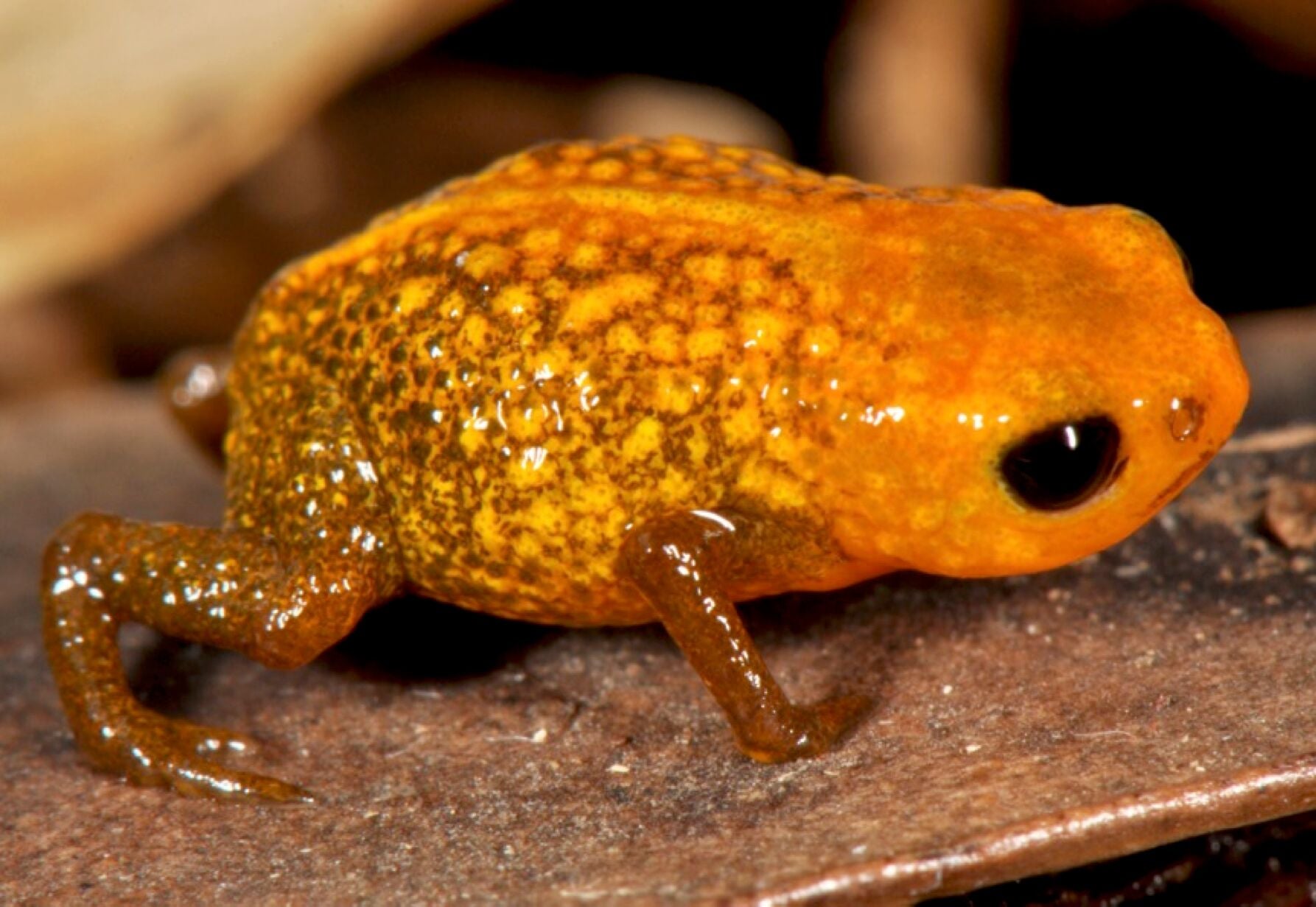

Among the smallest vertebrates on the planet, these colorful creatures can fit comfortably on a human thumbnail. To understand just how tiny these frogs are, consider this: the largest living vertebrate is the blue whale, measuring around 26m (85 ft), while the smallest was believed to be a fish (Paedocypris progenetica) with an adult size of 7.9-10.3mm (0.3-0.4 in).
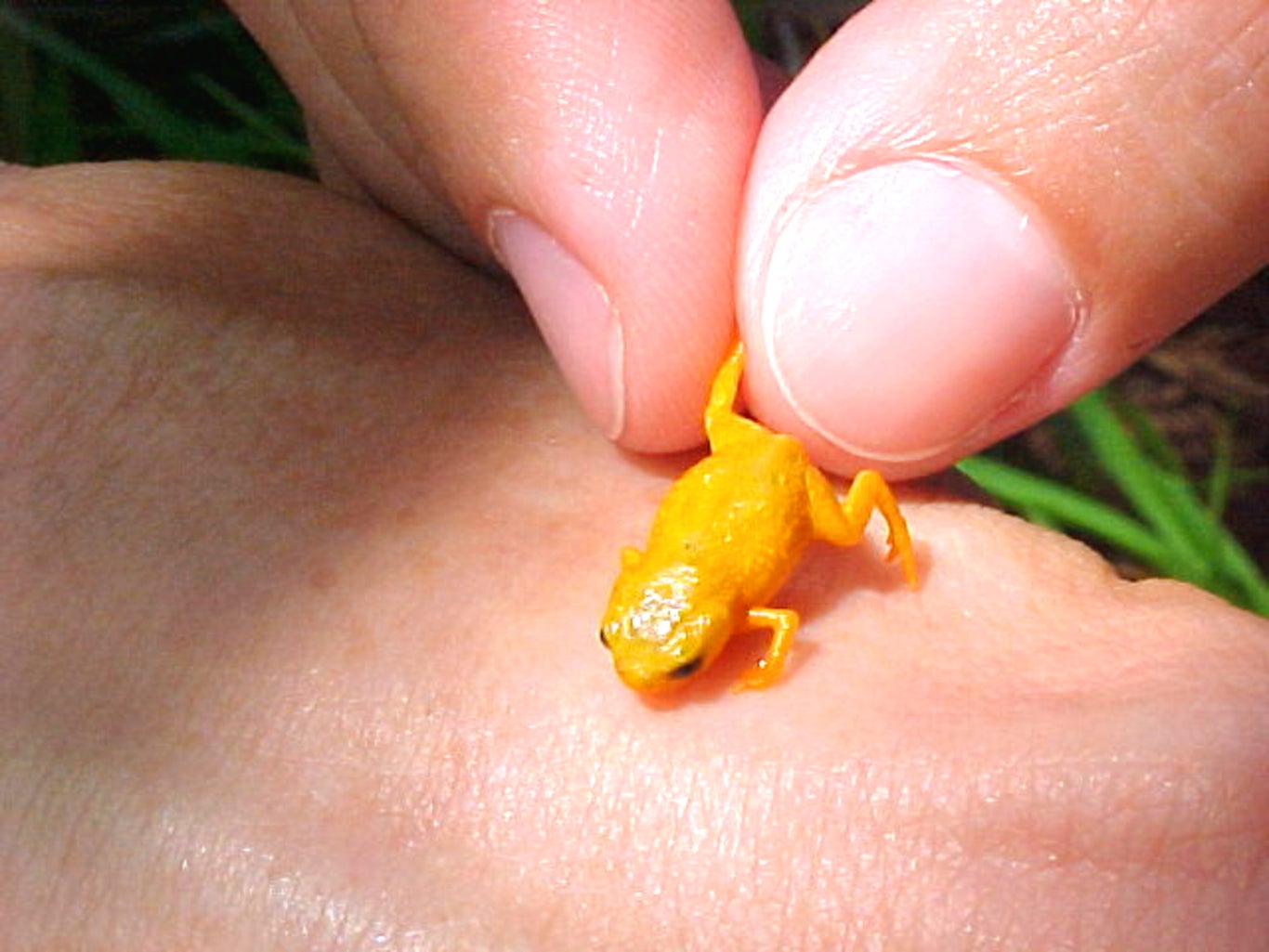
Then two years ago a new species of miniature frog was described, and it was a record breaker. Paedophryne amauensis, which lives on the island of New Guinea, only grows to an average size of just 7.7mm and is now considered the world’s smallest vertebrate.
The latest discoveries in Brazil, announced in the journal PeerJ, are slightly larger, at between 9 and 13mm. But they’re still tiny compared to pretty much anything else with a backbone.
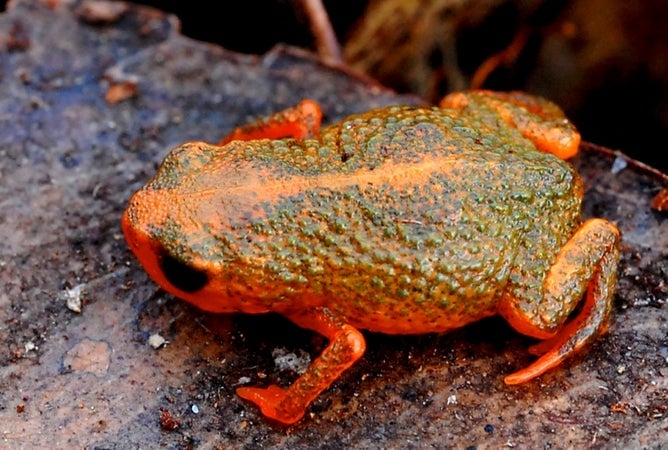
The frogs belong to the genus Brachycephalus, sometimes labeled “pumpkin toads” due to the often bright orange skin of some members. They live only in permanently-foggy patches of mountainside in Brazil’s Atlantic rainforest known as “cloud forest”.
The first Bracycephalus species was described as early as 1824 but most of the currently recognized 21 species have only been discovered in the last 15 years. The recent finding of seven new species and the difficulty of exploring the inaccessible habitat in which these animals live, suggests the actual diversity in the genus is considerably higher.
Why so small?
Most miniaturized frog species have simplified things as a consequence of their reduced size. They have fewer vertebrae than their larger relatives, and fewer skull elements. They also often have reduced numbers of digits; regular frogs generally have four fingers and five toes, whereas miniature frogs have just three and two respectively.
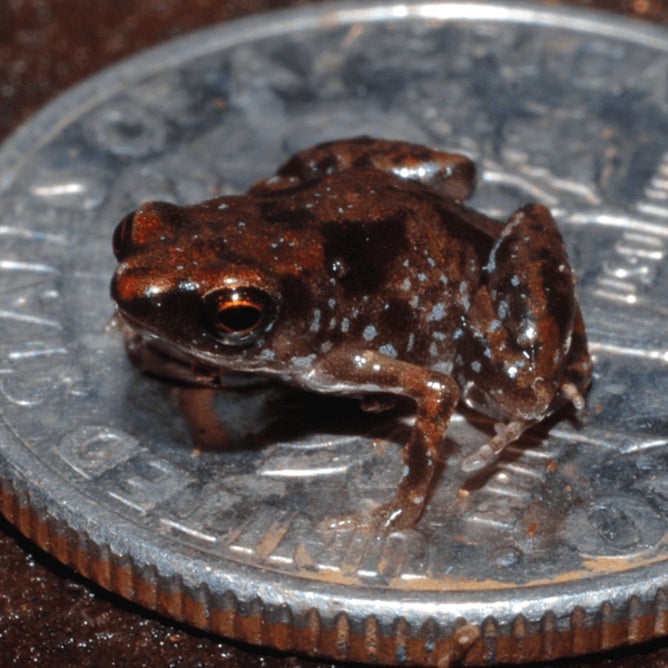
Miniaturized frogs share a number of ecological traits—they are found in wet tropical regions, primarily in forests, living near the ground in the moist leaf litter. This makes sense for such tiny amphibians. After all, their high surface-to-volume ratio makes them vulnerable to desiccation (drying out) and thus they are very sensitive to water loss.
Many, however, are not dependent on water for reproduction. In fact, some species entirely lack the larval tadpole stage typical of most frogs. Females in these cases instead produce a small number of large eggs that develop directly into small independent froglets.
Although this elimination of a tadpole stage may have paved the way for the exploitation of new niches and miniaturization, the relationship between miniaturization and terrestrial breeding is not well understood. It is believed that miniaturisation has evolved independently at least 11 times in terrestrial frogs and species measuring less that 13mm include representatives from five families and nine genera.
Brazil’s frog paradise
The Atlantic cloud forests of Brazil have the sort of diverse and humid microclimates in which frogs thrive. The forests are home to more than 400 different species, around 8% of the world’s frog and toad species.
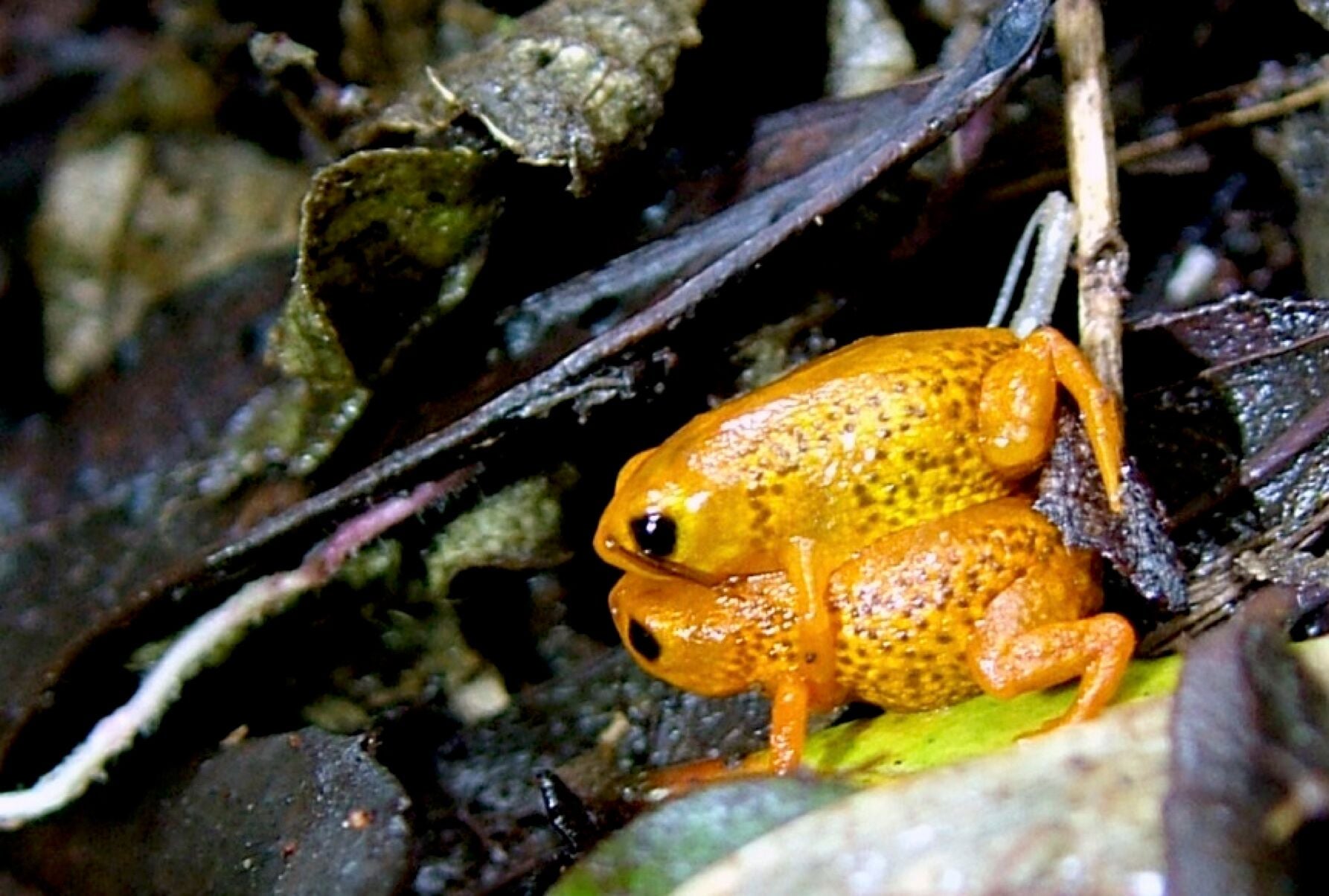
The region’s frogs are noted for the extraordinary diversity in reproductive modes, In fact, they exhibit 27 different reproductive modes in total including, of course, the typical reproductive cycle characterized by aquatic eggs (or “frog spawn”) that develop into tadpoles that in turn metamorphose into four-legged frogs.
But in many other species, including several found in the cloud forests, eggs and/or tadpoles are partially or completely removed from water. For example, some frogs lay their eggs in foam nests that float on the surface of ponds or on water accumulated on plants. The eggs hatch into tadpoles that complete development in water.
The recently found species, and most of their closest relatives, have gone a step further and completely removed their eggs from water and in the process eliminated the tadpole stage completely.
Decimation of the Brazilian Atlantic forest is one of the most alarming and desperate conservation problems in the world. In the year 1500 at the beginning of European colonisation, the area covered by the forest was approximately 1,300,000 km2 (305,000 square miles). Today the forest has been reduced to 7.6% of its original extent and the remaining forest is still under severe anthropogenic pressure.
Deforestation causes areas to dry out and eliminates those species, like miniature frogs and toads that depend on humid forests in order to breed successfully. Of the frog and toad species occurring in cloud forest, 81% occur nowhere else on earth.
No doubt there are many other frog species in Brazil that have not yet been discovered. Sadly, given the current rate of destruction and species extinction, it is possible they never will be.